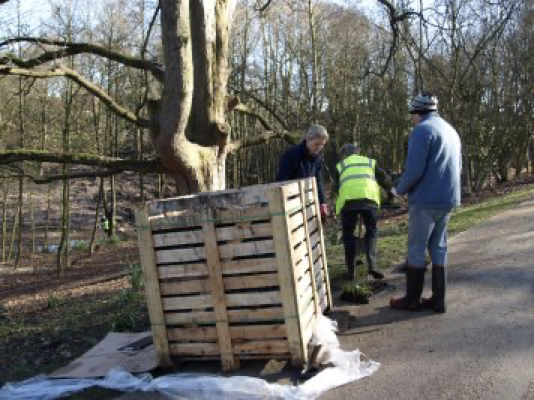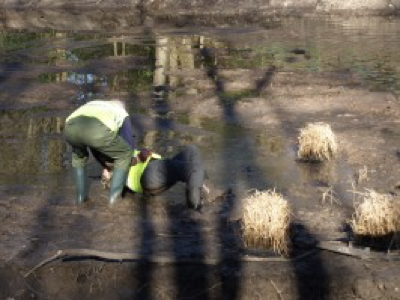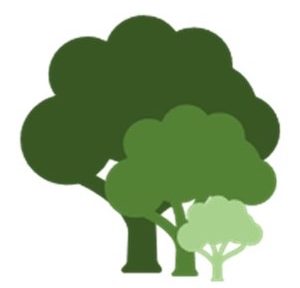The River Chor is a largely culverted stream. Its name was back-formed from “Chorley”. The source of the river is in the hills near Heapey. Subsequently, the young stream flows through Chorley North Industrial Estate, past the B&Q DIY store and then underground to Astley Park. The river exits at the Southport Road end of the Park, flowing behind Chorley Nissan and through Big Wood at the foot of Stansted Road, before connecting into Gillibrand Reservoir. At the end of the reservoir, the river continues for approximately one hundred metres and flows into the River Yarrow.
For many years the Friends had expressed great concern regarding the water quality in the river and the lack of plant life and fish. There are many factors which influence the health of the river particularly the run off from the M61. When the motorway was constructed no interceptor traps were installed therefore the run off of pollutants enter the water courses nearby including the Chor. As the river runs through the industrial estate there is further possibility of contamination. Below is an email received from the Environment Agency in response to our queries in 2012.
I finally got chance to look at the outfall into the River Chor today, the one mentioned at the Friends meeting. It was running clear at the time and there’s not evidence of any impact in the Chor itself, which is a good thing. I had a chat with a couple of the Parks Dept. staff who also confirmed that on occasions it does run grey coloured. I left them my details and they have said they will contact me if noted in the future. From any future reports it may be possible to note a pattern to the incidents, e.g. on a Tuesday around midday. This will may help me in tracking down the source.
Looking at the drainage maps, this outfall serves quite a large area mainly residential. Possible sources could be wrong connections e.g. a house or houses with say new appliances plumbed into the surface water system and not the foul sewer. It might be then as its an intermittent pollution its only a very few, even only one house wrongly connected. You’ll appreciate that these can be like trying to find a needle in a haystack!
’ll keep an eye on it as I’m in the vicinity fairly regularly. In the meantime please do let me know of any future incidents you or any of the Friends Group note.”
Reed beds are recognised as an effective, natural method of removing pollutants, for further information please click on the Soil Association link
Plans were drawn up to install a 30 square metre reed close to the where the river enters the Park close to Park Road.



In June 2012 after a meeting with the Environment Agency they decided to award £5000 towards the scheme. Lindsey Blackstock from Chorley Council was in communication with the Agency regarding advice about site design/ecological survey/reed bed design and reed bed creation and the best companies/consultants to approach.
In August Keith Woan from the Friends put forward Mark Champion as a possible consultant for the reed bed as he had recently given a talk to the Chorley Natural History Society on the subject. Mark was an ideal choice as he was looking after a similar bed at Wigan Flash. Mark expressed a willingness to be involved in drawing up designs
A meeting then took place in the Park in September with Mark, Lindsey and Friends’ volunteers to scope the works, survey the area and then we held a meeting at the town hall to further discuss the options and draw up a forward plan.
On 10th September Lindsey sent the following message
“Just a quick update on Astley Park – we are in the process of signing the EA agreement to carry out the reed bed project and release the funding. I have raised an order to Mark for the phase 1 habitat survey and have commissioned a topographical survey. Once we have this Mark can carry out a site survey and start to draft the master plan. Once he has a draft we will have another meeting to look at it and discuss/approve the final master plan. Wildlife survey data is being sent through to Mark from the Natural History Society and it will be interesting to see what history is discovered about the site. Mark is marking up trees to be removed and coppiced, this will be done over winter by a variety of tree contractors, council staff and volunteers. The knotweed is also being treated.”
The photos below show the start of the work in January 2015.


As of January 2016 preparatory work has begun clearing the area below the Park Road end that will contain the reed bed.



On March 14th 2016 Friends’ volunteers were invited along with other interested groups to oversee and help the contractors in the planting of the reed bed.










Then, a week or so later a photograph (above) taken on Good Friday 2016.

Summer 2016 and the reed bed is coming along nicely – see photograph below.

The project was also featured in a report in the Chorley Guardian on the 19th August when the project was officially recognised as being complete.


